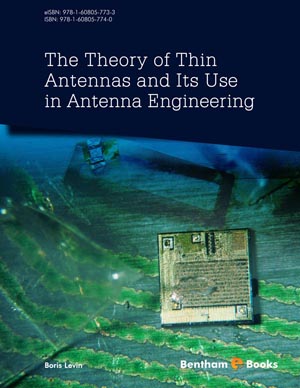Abstract
The performance of a slot antenna situated on infinite conic metal surface with circular cross-section is shown to be similar to that of situated on the infinite flat metal surface. The proof is based on the transition from a V-shaped magnetic radiator to a double-sided slot cut in the mentioned surface. If, to simplify the design, metal and slot radiators are placed along the regular pyramid sides, the antenna performance changes but remains close to that of the self-complementary antenna. Flux density distribution over long line cross section is analyzed. The transition from the parabolic problem to the flat one is done.
Keywords: Complementary principle, Directivity of 3-dimensional radiator, Duality principle, Double-sided slot, Electric V-shaped radiator, Finite dimensions of the radiator, Flux density distribution over long line cross section, Magnetic Vshaped radiator, Metal sheet as a set of divergent wires, Parabolic long line, Parabolic problem, Phantom model, Phantom vessel shape as an example of a parabolic surface, Pyramid-shaped volume radiator, System of parabolic coordinates, Three-dimensional radiator, Transformation of variables, Transition from a paraboloid to a cylinder, Two slot antennas on curvilinear metal surfaces.



















